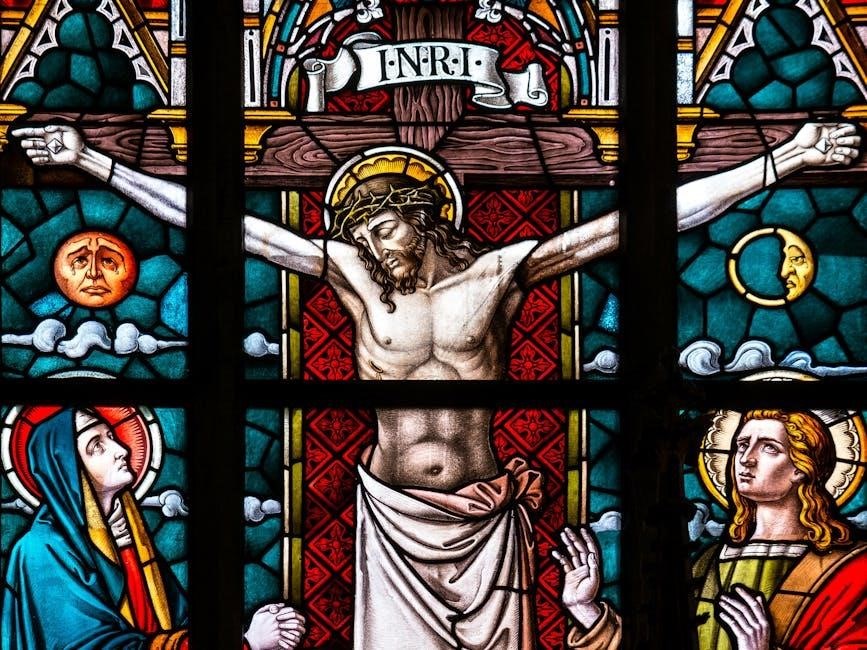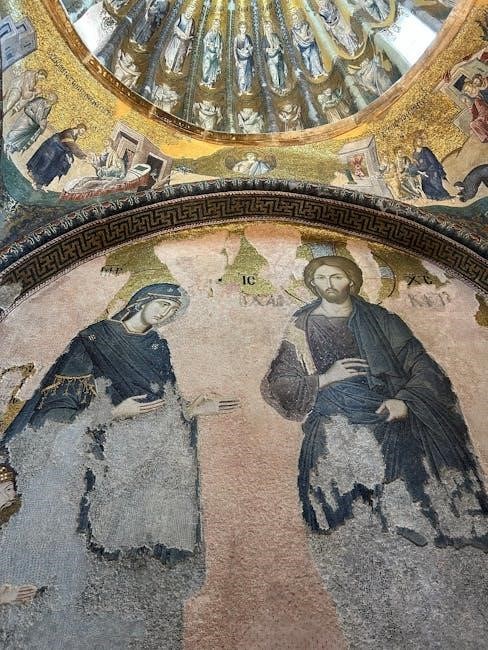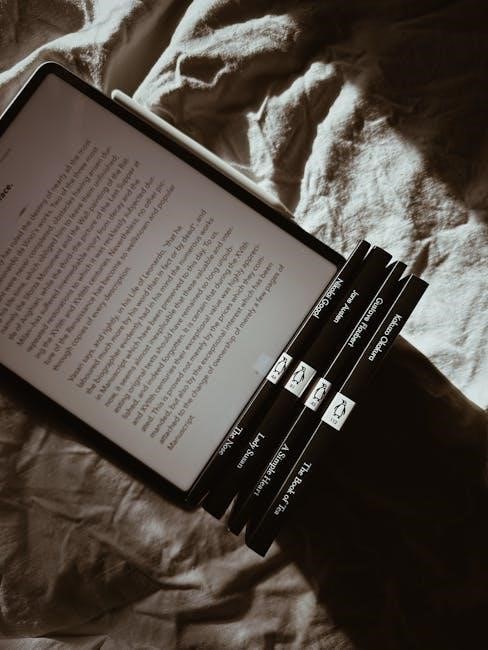bimba cylinder catalog pdf
The Bimba Cylinder Catalog is a comprehensive resource for selecting and specifying cylinders, available online in PDF format for easy access and reference. It provides detailed product information, including technical specifications, configurations, and pricing details without taxes or delivery costs.
1.1 Overview of Bimba Cylinders
Bimba cylinders are high-quality actuators designed for various industrial applications, offering reliability and performance. They are available in pneumatic, hydraulic, and specialty types, catering to different operational needs. The LTV series, for instance, features 3 and 4-channel pneumatic control, ensuring precise automation. These cylinders are widely used in industrial automation, mobile equipment, and specialized sectors like food and beverage and pharmaceuticals. Bimba’s product range is supported by detailed technical specifications, ensuring compatibility and customization options to meet specific requirements. Their robust construction and advanced features make them a preferred choice for engineers and manufacturers seeking durable and efficient solutions.
1.2 Importance of the Catalog for Users
The Bimba Cylinder Catalog is an essential tool for users, providing detailed insights into product offerings, technical specifications, and configurations. It enables informed decision-making for selecting the right cylinder for specific applications. The catalog simplifies procurement by offering clear part numbers, pricing details, and delivery information. Users can access it online in PDF format, ensuring convenience and quick reference. It also serves as a guide for maintenance and troubleshooting, helping users optimize cylinder performance and extend lifespan. By offering a comprehensive overview of products and services, the catalog empowers users to streamline their operations and meet industrial challenges effectively.
Understanding the Bimba Cylinder Catalog
The catalog is structured for easy navigation, offering clear sections and detailed technical information. It includes product overviews, specifications, and configurations, available in PDF format online.
2.1 Structure and Navigation of the Catalog
The Bimba Cylinder Catalog is organized into clear sections, making it easy to navigate and find specific information. The catalog begins with a table of contents, allowing users to quickly access product categories, technical specifications, and accessories. Each product section is divided into subcategories, such as pneumatic, hydraulic, and specialty cylinders, with detailed descriptions and images. Technical specifications, including performance characteristics and dimensional tolerances, are presented in easy-to-read tables. The catalog also includes sections on customization options, repair kits, and mounting solutions. A logical flow ensures users can progress from product selection to technical details seamlessly. Indexes and search functions in the PDF version enhance navigation, making it user-friendly for both novice and experienced users.
2.2 Key Features and Highlights
The Bimba Cylinder Catalog PDF stands out for its detailed product listings, including technical specifications, configurations, and accessories. It highlights the variety of cylinder types, such as pneumatic, hydraulic, and specialty cylinders, catering to diverse industrial needs. The catalog also emphasizes customization options, allowing users to tailor cylinders to specific applications. Additionally, it provides clear part numbering systems and pricing details, excluding taxes and delivery costs. The document is structured for easy navigation, with sections dedicated to performance characteristics, dimensional tolerances, and material details. This ensures users can quickly find the information they need, making it an invaluable resource for engineers and procurement teams.
Types of Cylinders in the Catalog
The catalog features a variety of cylinder types, including the LTV series with 3 and 4-channel pneumatic control options, suitable for diverse applications.
3.1 Pneumatic Cylinders
Bimba’s pneumatic cylinders are designed for reliable performance in various industrial applications. Available in the Bimba Cylinder Catalog PDF, these cylinders feature advanced engineering and durable construction. The catalog highlights the LTV series, offering 3-channel and 4-channel pneumatic control options. These cylinders are known for their compact design and efficient operation, making them suitable for automation and control systems. Users can explore configurations, technical details, and accessories tailored to specific needs. With a focus on precision and longevity, Bimba’s pneumatic cylinders are a preferred choice for industries requiring consistent and high-quality actuation solutions. The PDF catalog provides detailed specifications and ordering information for easy reference.
3.2 Hydraulic Cylinders
Bimba hydraulic cylinders are designed for high-performance applications, offering durability and precision in demanding environments. These cylinders are built to withstand high pressures and are commonly used in heavy machinery, industrial automation, and mobile equipment. The catalog details their robust construction, featuring materials like steel and advanced sealing technologies to ensure reliability. Hydraulic cylinders are available in various configurations, including tie-rod and welded designs, to suit specific operational needs. The Bimba Cylinder Catalog PDF provides detailed specifications, dimensional tolerances, and customization options, enabling users to select the ideal cylinder for their application. It also highlights industries where these cylinders excel, such as construction and manufacturing.
3.3 Specialty Cylinders
The Bimba Cylinder Catalog also features a range of specialty cylinders designed for unique applications. These include high-temperature cylinders, corrosion-resistant models, and low-velocity cylinders for precise control. Specialty cylinders often incorporate advanced materials, such as stainless steel, for durability in harsh environments. They are ideal for industries requiring customized solutions, like food processing or pharmaceuticals, where sanitation and precision are critical. The catalog provides detailed specifications, including operating pressures, temperatures, and compatible mounting options. Users can explore options like pneumatic or hydraulic control, ensuring compatibility with their systems. This section highlights Bimba’s commitment to innovation, offering tailored solutions for complex challenges.
Technical Specifications
The catalog details performance characteristics, dimensional tolerances, and material specifications for each cylinder type, ensuring precise selections for various applications and operational requirements.
4.1 Performance Characteristics
The Bimba Cylinder Catalog details the performance characteristics of each cylinder series, ensuring users can select the right product for their application. Key metrics include operating pressure ranges, flow rates, and cycle life. The catalog specifies maximum and minimum pressures, as well as optimal temperature ranges for reliable operation. It also highlights efficiency ratings and response times for pneumatic and hydraulic models. Performance data is presented in clear charts and graphs, enabling quick comparison between models. Customizable options are noted, allowing users to tailor performance to specific needs. This section ensures engineers and technicians can make informed decisions based on precise, application-specific data.
4.2 Dimensional Tolerances
Dimensional tolerances in the Bimba Cylinder Catalog are critical for ensuring compatibility and optimal performance. The catalog provides precise measurements for cylinder components, including bores, strokes, and mounting dimensions. These tolerances are specified to meet industry standards, ensuring proper fitment and functionality. For example, the DU Metric Cylindrical Bush products include detailed part numbers with outer and inner diameter tolerances. Users can find these specifications in the technical drawings and product details sections of the PDF catalog. Adherence to these tolerances ensures minimal wear, prevents leakage, and guarantees smooth operation. Proper alignment with system requirements is essential for maximizing cylinder lifespan and efficiency.
4.3 Material and Construction Details
Bimba cylinders are constructed from high-quality materials to ensure durability and reliability in various applications. Common materials include aluminum, stainless steel, and engineered polymers, selected for their strength, corrosion resistance, and compatibility with different operating environments. The catalog details the specific alloys and grades used, ensuring compliance with industry standards. Construction techniques, such as precision machining and surface treatments, are highlighted to emphasize product longevity. These details help users match the cylinder’s material properties to their application requirements, ensuring optimal performance and longevity; The catalog also outlines optional coatings and treatments for enhanced resistance to harsh conditions.
4.4 Customization Options
Bimba offers extensive customization options to meet specific application requirements. Users can specify custom cylinder lengths, mounting styles, and special coatings to suit their operational needs. Additionally, options for special materials, such as stainless steel or aluminum, are available for unique environments. The catalog also highlights the ability to integrate sensors and switches directly into cylinders for enhanced functionality. Custom port configurations and valve systems can be tailored to optimize performance in diverse industrial settings. These customization options ensure that Bimba cylinders can be adapted to a wide range of applications, providing flexibility and precision for user-specific demands.

Accessories and Related Products
The catalog features a variety of accessories, including mounting options, sensors, switches, valve systems, and repair kits, to enhance cylinder functionality and simplify maintenance processes.
5.1 Mounting Options
The Bimba Cylinder Catalog provides a wide range of mounting options to ensure flexibility and compatibility with various applications. These options include front and rear trunnion mounts, flange mounts, and other specialized configurations. Each mounting style is designed to simplify installation and reduce alignment errors. The catalog details the dimensions and compatibility of each mounting option, allowing users to select the most suitable solution for their specific needs. Additionally, Bimba offers adapters and brackets to accommodate different cylinder sizes and types, ensuring seamless integration with existing systems. This variety of mounting options enhances the versatility of Bimba cylinders, making them suitable for diverse industrial and mobile applications.
5.2 Sensors and Switches
The Bimba Cylinder Catalog PDF includes a detailed section on sensors and switches, essential for enhancing cylinder performance and integration into automated systems. These components are designed to monitor cylinder position, velocity, and status, ensuring precise control and safety. The catalog offers a variety of sensor options, including magnetic, proximity, and electronic sensors, tailored to different cylinder types and applications. Switches are also featured, providing reliable feedback for system operation. Detailed specifications, such as operating ranges, compatibility, and installation guidelines, are provided to help users select the right solutions. This section emphasizes how sensors and switches can improve efficiency, reduce downtime, and ensure compliance with safety standards in industrial automation and other demanding environments.
5.3 Valve and Control Systems
Bimba’s valve and control systems are essential for optimizing cylinder performance, offering precise control over pneumatic and hydraulic operations. The catalog details a range of valve options, including 3-way and 4-way directional control valves, proportional valves, and solenoid-operated models. These components ensure smooth actuation, pressure regulation, and flow control, catering to various industrial applications. The LTV series, for instance, provides advanced pneumatic control solutions. Detailed specifications, including port sizes, operating pressures, and flow rates, are provided to help users select the right valve for their system. Compatibility with Bimba cylinders is highlighted, ensuring seamless integration and optimal functionality. This section is a vital resource for engineers and technicians seeking to enhance system efficiency and reliability.
5.4 Repair Kits
Bimba offers a range of repair kits tailored to extend the lifespan of their cylinders. These kits typically include essential components such as seals, O-rings, and pistons, designed to restore optimal performance. The Bimba Cylinder Catalog provides detailed part numbers and descriptions for each repair kit, ensuring compatibility with specific cylinder models. This simplifies the process of identifying and ordering the correct parts for maintenance or repairs.
Repair kits are a cost-effective solution for addressing wear and tear without replacing the entire cylinder. The catalog includes instructions and guidelines for proper installation, helping users maintain efficiency and reduce downtime. By offering these kits, Bimba supports proactive maintenance, ensuring systems operate smoothly and reliably over time.

Applications of Bimba Cylinders
Bimba cylinders are widely used in industrial automation, mobile equipment, food and beverage, and pharmaceutical industries, offering reliable performance in diverse applications requiring precise control and durability.
6.1 Industrial Automation
Bimba cylinders play a pivotal role in industrial automation, enabling precise control and high performance in manufacturing processes. Their robust design ensures reliability in high-duty cycle applications, while customizable options cater to specific automation needs. With a focus on efficiency, Bimba cylinders are widely used in material handling, assembly lines, and robotic systems. The catalog details how these cylinders integrate seamlessly with automation systems, offering solutions for motion control, positioning, and actuation. By providing technical specifications and application guidelines, the catalog helps engineers optimize their automation setups for maximum productivity and minimal downtime. This makes Bimba cylinders a preferred choice for industries seeking dependable automation solutions.
6.2 Mobile Equipment
Bimba cylinders are widely used in mobile equipment, including construction machinery, agricultural vehicles, and material handling systems. Their compact design and durability make them ideal for applications requiring reliable motion control in harsh environments. The catalog highlights cylinders with high cycle life and resistance to contaminants, crucial for outdoor and mobile applications. These cylinders are often specified for tasks like lifting, tilting, and positioning in vehicles and equipment. The range includes options for both pneumatic and hydraulic operation, ensuring compatibility with various mobile systems. Bimba’s focus on engineered solutions allows customization to meet specific mobile equipment needs, enhancing productivity and operational efficiency in demanding environments.
6.3 Food and Beverage Industry
Bimba cylinders are widely used in the food and beverage industry due to their durability, precision, and ability to meet stringent hygiene standards. They are commonly applied in processing equipment, packaging lines, and material handling systems. The catalog provides detailed specifications for cylinders designed to withstand corrosive environments and maintain cleanliness, ensuring compliance with food safety regulations. Users can find cylinders made from food-grade materials, ideal for applications requiring high sanitation levels. The catalog also highlights customization options to suit specific food processing needs, ensuring efficient and reliable performance in demanding environments.
6.4 Pharmaceutical and Medical Devices
Bimba cylinders are widely used in the pharmaceutical and medical industries due to their precision, reliability, and compliance with strict regulatory standards. These cylinders are employed in medical devices, laboratory equipment, and patient care systems, where accuracy and durability are critical. Their compact designs and corrosion-resistant materials make them ideal for sterile and cleanroom environments. Bimba’s product range supports applications requiring minimal contamination risks and high performance, ensuring compliance with FDA and ISO standards. The catalog provides detailed specifications for selecting the right cylinders for medical equipment, enabling manufacturers to maintain high operational standards and reliability in critical healthcare applications.

Maintenance and Repair
Regular maintenance is crucial for optimal performance and longevity. Cleaning, inspecting seals, and proper lubrication are essential. The Bimba PDF catalog offers detailed troubleshooting and repair guidance, supported by technical experts.
7.1 Best Practices for Cylinder Maintenance
Regular maintenance is crucial for extending the lifespan of Bimba cylinders. Start with a thorough visual inspection to identify wear or damage. Clean cylinders regularly to prevent contamination, using non-abrasive materials to avoid scratching surfaces. Lubricate moving parts as specified in the Bimba catalog to reduce friction and wear. Store cylinders in a dry, cool environment when not in use. Follow the recommended maintenance schedule outlined in the PDF catalog to ensure optimal performance. Always refer to Bimba’s guidelines for specific models, as improper maintenance can lead to premature failure. Address any issues promptly to avoid downtime and ensure reliable operation.
7.2 Troubleshooting Common Issues
Troubleshooting common issues with Bimba cylinders involves identifying symptoms like air leaks, slow retraction, or uneven movement. Inspect seals for wear or damage and ensure proper installation. Check for misaligned rods or excessive side loads. Refer to the Bimba Cylinder Catalog PDF for diagnostic guides and maintenance tips. Lubrication levels and filter cleanliness should also be verified. For hydraulic cylinders, monitor fluid pressure and temperature. If issues persist, consult technical support or repair kits section in the catalog for guidance. Regular inspection and timely replacement of worn parts can prevent downtime and extend cylinder lifespan. Always follow safety protocols when performing diagnostics or repairs.
7.3 Replacement and Repair Procedures
Replacement and repair procedures for Bimba cylinders are outlined in the catalog to ensure proper maintenance and longevity. Users should follow safety precautions, such as disconnecting power and relieving pressure, before starting any work. The catalog provides step-by-step instructions for disassembling cylinders, inspecting components, and replacing worn or damaged parts. Reassembly should adhere to torque specifications and alignment guidelines to maintain optimal performance. Testing the cylinder after repair is crucial to ensure functionality. Additionally, Bimba offers repair kits tailored to specific cylinder models, making the process more efficient. Always refer to the official documentation for detailed instructions and warranty considerations.

Ordering and Procurement
The Bimba Cylinder Catalog PDF provides a straightforward ordering process. Use the online catalog to select part numbers and contact sales for quotes or direct orders. Prices exclude taxes and delivery costs.
8.1 How to Read Part Numbers
Understanding part numbers is essential for selecting the correct Bimba cylinder and accessories. The catalog provides a detailed guide to decoding part numbers, ensuring accurate product identification. Each part number is structured to represent specific features, such as cylinder type, size, and configuration. For example, a typical part number might include prefixes for product family, numerical values for dimensions, and suffixes for optional features. Users can refer to the catalog’s guide to interpret these codes accurately. This section helps streamline the ordering process, ensuring that customers specify exactly what they need. Properly reading part numbers is critical for receiving the correct product and avoiding delays.
8.2 Contact Information and Support
Bimba Manufacturing Company provides comprehensive support to assist users with cylinder selection, technical inquiries, and ordering processes. Customers can contact Bimba’s dedicated support team via phone, email, or through the official website. The company offers detailed contact information, including phone numbers and email addresses, to ensure prompt assistance. Additionally, Bimba’s website features a “Contact Us” section with a form for submitting inquiries. For immediate help, live chat support is also available during business hours. The catalog PDF includes a section with contact details and regional office information, ensuring global accessibility. Bimba’s customer service team is committed to providing technical support, answering questions about product specifications, and guiding users through the ordering process efficiently.
- Phone: (800) 747-6261
- Email: [info@bimba.com](mailto:info@bimba.com)
- Website: www.bimba.com
The Bimba Cylinder Catalog is an essential resource for engineers and technicians, offering detailed specifications, configurations, and pricing in an accessible PDF format. Bimba remains a trusted name in cylinder solutions.
9.1 Summary of Key Points
The Bimba Cylinder Catalog is an essential guide for engineers and users, offering detailed insights into cylinder selection, technical specifications, and customization options. It provides comprehensive information on pneumatic, hydraulic, and specialty cylinders, along with accessories like sensors, valves, and repair kits. The catalog highlights performance characteristics, dimensional tolerances, and material details to ensure optimal cylinder performance. Users can explore application-specific solutions across industries such as industrial automation, food and beverage, and pharmaceutical sectors. Additionally, the catalog includes maintenance best practices and troubleshooting tips to maximize cylinder longevity. Available in PDF format, it serves as a convenient resource for quick reference, enabling users to make informed decisions for their specific needs.

Additional Resources
Bimba offers an online PDF catalog for easy access to product details. Technical support and FAQs are available for assistance. Visit their official website for more resources.
10.1 Online Catalog and PDF Downloads
The Bimba Cylinder Catalog is readily available online in PDF format, offering users a convenient and accessible way to explore products and specifications. The digital catalog provides detailed information on cylinder series, including performance characteristics, dimensional tolerances, and material details, ensuring users can make informed decisions. PDF downloads enable easy offline access, making it ideal for engineers, technicians, and procurement teams to review and reference product details anytime. The catalog also includes pricing information, though it excludes taxes, delivery costs, and customs duties, allowing users to plan budgets effectively. Regular updates ensure the catalog reflects the latest product innovations and industry standards, making it a reliable resource for cylinder selection and procurement.
10.2 Technical Support and FAQs
Bimba offers robust technical support to assist users with cylinder selection, troubleshooting, and maintenance. The FAQ section in the PDF catalog addresses common inquiries about product specifications, installation, and performance. Customers can access detailed guides for resolving issues and optimizing cylinder operation. Additionally, Bimba provides contact information for direct support, ensuring prompt assistance for complex or specific needs. The resources are designed to empower users with comprehensive solutions, enhancing their experience with Bimba cylinders.

























































